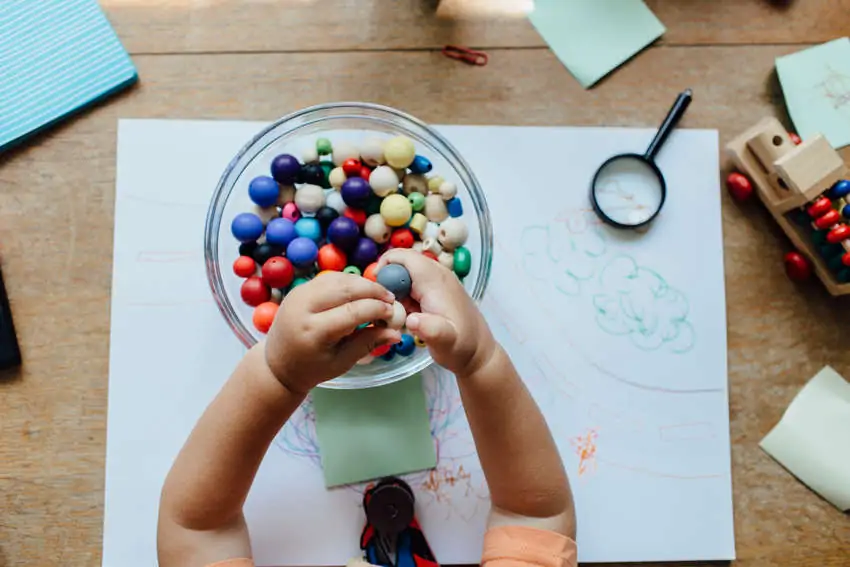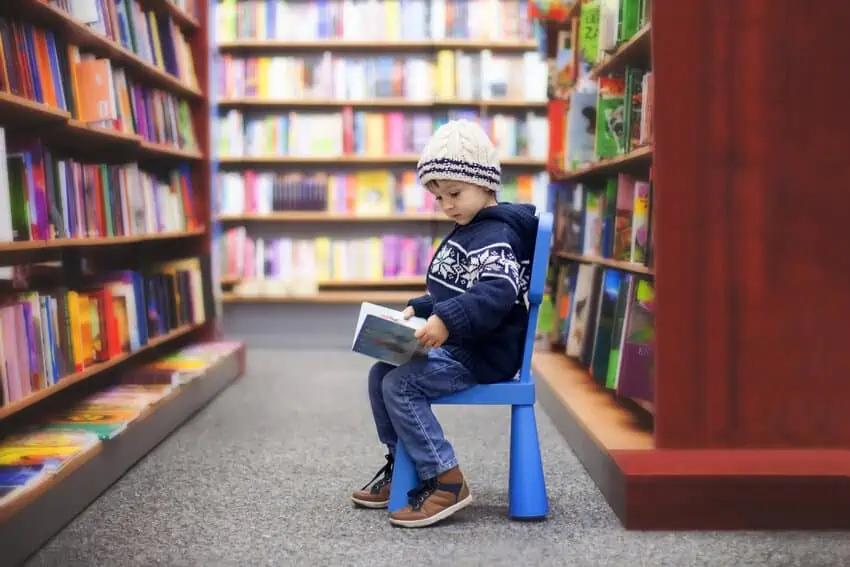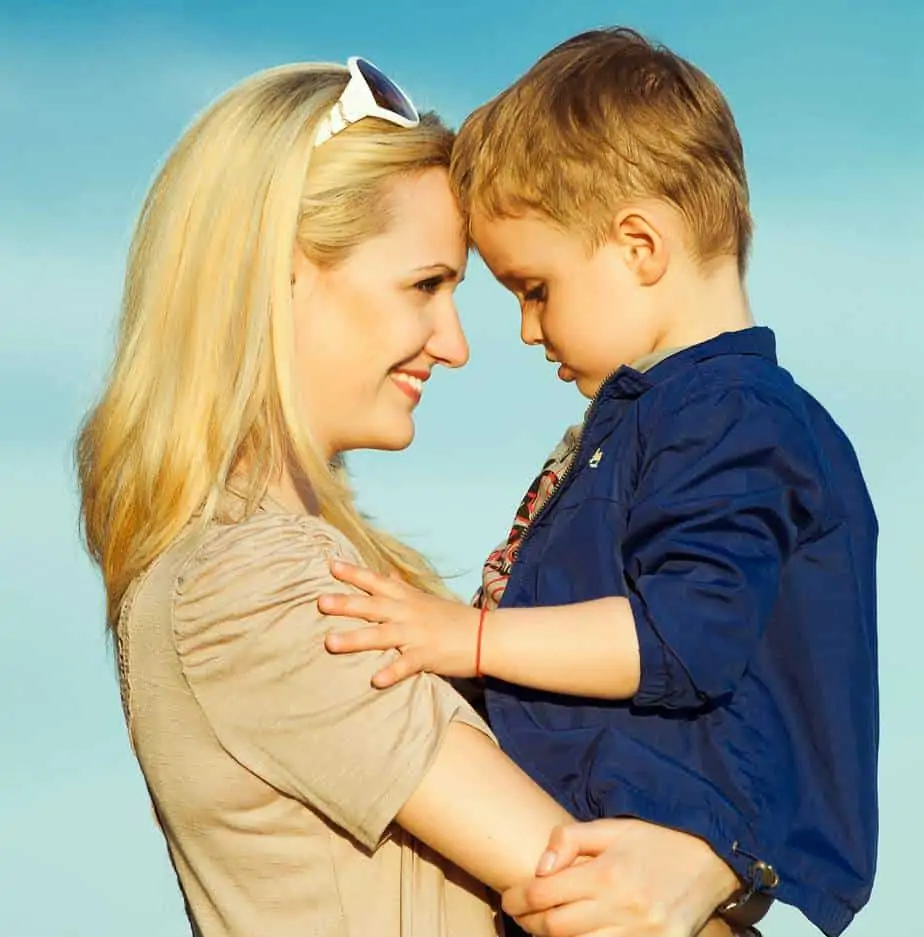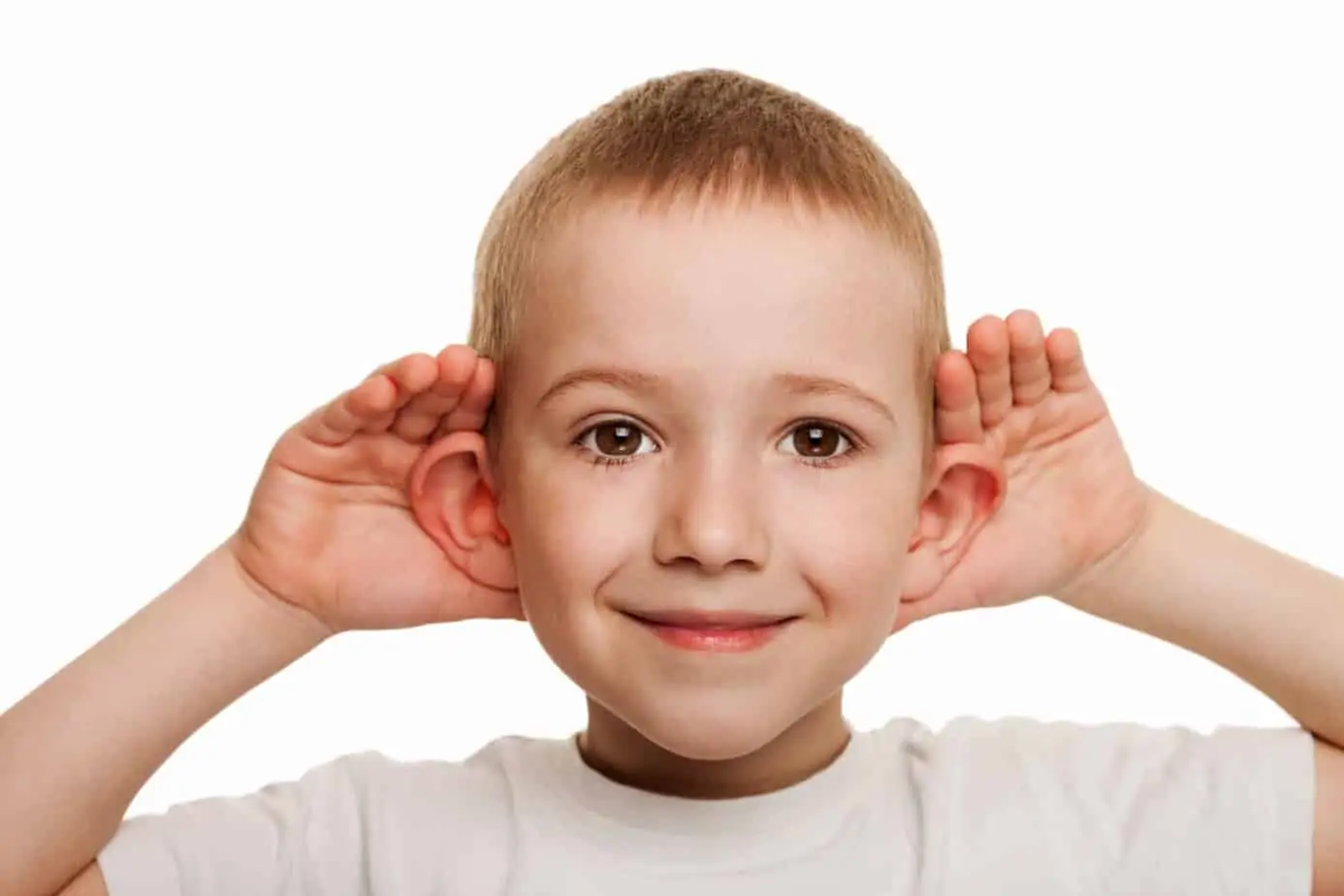Continue to enhance your child’s development by encouraging and guiding them to learn the top 5 fine motor skills. In today’s post, I will be breaking down what exactly are fine motor skills along with activities you can include them into your baby’s daily routine so they can continue to grow.
Navigating the development of your baby can be so confusing.
Fine motor skills, gross motor skills, social-emotional development, and so many more words are tossed at moms. We just want our children to grow and thrive in a safe and loving environment!
That’s why it is essential to know how to help your baby develop fine motor skills.
To do so, I’ve gone ahead and put together this helpful resource to aid and guide you to the development of your baby’s fine motor skills and to help you support their growth.
What Are Fine Motor Skills?
Fine motor skills involve the small muscle groups in the hands, wrists, and fingers.
This skill development starts when babies are still infants with reflexive grasping and continue through their school-age with skills like using a pencil to write and scissors.
As their muscles and bones develop, their skills will continue to improve and become more intricate.
Fine motor skills are more complex and take far more concentration than gross motor skills.
Gross motor skills have more to do with large muscle groups like core muscles, leg muscles, and arm muscles. It can also include foot dexterity that helps you run, walk, climb, and support fine motor skills.
What Are The 5 Fine Motor Skills?
There are five important fine motor skills that your baby will develop, including:
- Reflexive Grasp
- Pincer Grasp
- Twisting Objects
- Handwriting/Scissor Skills
- Using Eating Utensils
These are not all of the motor skills, but five essential ones for your child’s development.
Reflexive Grasp
This is the first fine motor skill your baby has. It is a reflex, so your baby has begun developing it since birth.
If you put your finger in your baby’s hand, your baby will wrap their fingers around yours and squeeze or even clampdown.
Tip: You should talk with your doctor if you notice your baby cannot squeeze your finger well. This may indicate they have low muscle tone and need some early intervention.
Pincer Grasp
When your baby is between 4 and 6 months old, they will develop the ability to pick things up using a thumb and forefinger in a pincer grasp.
When your baby starts table food, small bites like puffs and rice cereals will help your baby practice their pincer grasp safely.
Twisting Objects
Being able to turn a doorknob or twist a cap on and off is another type of fine motor skill that needs to be practiced.
Washing old large parmesan bottles and plastic seasoning bottles for your child to play and practice with is a fun way for your child to build up those muscles and dexterity.
Handwriting And Scissor Skills
Using toddler/ preschool safety scissors and working on handwriting skills are important parts of fine motor skill development.
Handwriting skills start with scribbling, then slowly moves into making shapes until your child can make letters.
Scissor skills doesn’t actually start with a pair of scissors at all – you should start with your child ripping up pieces of paper.
After that, have your child make short small snips with a pair of safety scissors, and then straight lines until they can cut complex shapes and curves.
Using Eating Utensils
Being able to use a fork, spoon, and knife to self-feed is all part of developing fine motor skills.
Children should start using a spoon in their first year and by 14-16 months old, they can progress to using a fork.
By the time most children turn two, they should be able to use a butter knife to cut small things on their dinner plate.
Fair warning: There will be a mess all over their plate and clothes until they get better at it. So be prepared!
Fine Motor Skill Activities For Toddlers
If you want to help your child develop their fine motor skills, here are some activities to start including in your weekly schedule:
Finger Foods To Perfect The Pincer Grasp
The best practice babies get in using their pincer grasp is feeding themselves finger foods. Try things like rice cereals, puffs, and even small cut-up pieces of fruits and vegetables.
Even if your schedule is super busy, you can sneak in fine motor development skill practice during meal/snack time.
Water Play For Dumping
Whether it’s at a water table or in the bath, babies and toddlers love filling up little cups and buckets and dumping them out.
It turns out that this is a great fine motor skills activity!
Adding simple things like measuring cups or little toy plastic buckets and teacups to bath time will allow your baby to practice these skills in a no-mess way.
Tearing Paper
Using hands to tear paper is a great muscle builder, and it is a stepping stone to scissor skills.
Construction paper is best for your toddler because it tears pretty easily and is too soft to cause paper cuts.
To do this, model the paper shredding with your child so they can try it for themselves. Once you have a bunch of different colored construction paper confetti, you can use it to make fun mosaic art with your toddler by gluing it down!
Coloring With Chunky Crayons
Little hands do better with larger objects than with smaller objects. Support your toddler’s budding writing skills by offering chunky, fat crayons.
We love these thick, chunky non-toxic crayons from Honey Sticks.
Thicker crayons are much better than a regular pack of crayons for small hands as it helps them get a better grip on them.
When your baby starts to scribble and draw, you can use a piece of masking tape to make sure the paper doesn’t move so your baby can have low-frustration color time.
As your child masters scribbling, you can start showing them how to copy shapes like circles and ovals. Then, move to shapes with sides like squares and triangles.
Honey Sticks are also our favorite non-toxic bath crayons.
Stacking Blocks
Starting around 6 months old, your baby will be interested in stacking blocks. This is an excellent activity for not only fine motor skills but hand-eye coordination too! A stacking ring is a timeless favorite but stacking cups are also wonderful.
In the next few months, your child will start stacking more and more blocks evenly. I recommend setting a time to play together with your toddler and sit down to build a small tower. Stacking towers with various shapes and colors also encourage learning of these concepts.
Don’t forget the best part: knocking the tower over!
Finger Painting
Showing your child how to finger paint pulls double-duty as fine motor skill practice and sensory activity.
At first, finger painting can just be moving colored bits of whipped cream around on their high chair tabletop. You can also let your toddler do finger painting in the bathtub if you just don’t have the mental and physical space to deal with another mess. You can make your own bathtub paints, or you can purchase some!
Tip: If your baby is still putting things in their mouth, you can make taste-safe finger paint with food coloring and whipped cream or use a non-toxic vegetable paint option.
Putting Together Puzzles
Puzzles are a fantastic tool for not only fine motor skills but for visual reasoning skills as well.
You can give your very young toddler wooden shape puzzles that are easier to put together. They will use their pincer grasp to pick up the piece and hand-eye coordination to put the pieces in the proper hole.
Once your toddler is a little older, smaller 6-12 piece puzzles are a wonderful quiet time, fine motor skills activity. In the beginning, put the puzzles together with them to teach them how to manipulate the pieces to match the picture.
Any of the chunky Melissa & Doug wooden puzzles are great choices and they hold up very well, too.
My favorite place to load up on toddler puzzles is the dollar store because if one gets ruined, I don’t feel as bad about tossing it. Plus, you can get a large variety of puzzles for as little as $10! Mom win!
Fine Motor Skill Games
If you want to include more fine motor skills activities in your day-to-day routine, there are many fine motor games available for sale.
- Games with tweezers like this cute bee game are great for pincer grasp skills and prewriting skills. The tweezers help develop those small hand muscles for handwriting later.
- For younger toddlers, this ring stacking moose helps them practice grasping objects and putting them on pegs. I like this one because it challenges toddlers to put the rings on the moose’s antlers in different directions.
- My other game recommendation is this fine motor fish from Learning Resources. Kids build hand strength as they put the stars in, using their pincer grasp and other fine motor skills.
What Do I Do If My Toddler Is Struggling With Their Development of Fine Motor Skills?
Some toddlers need more work than others to naturally build their fine motor skills. Continue to model different activities and introduce new activities regularly by:
Finding Ways To Make It Fun
For some kids, adding a sensory element, like finger painting, is a fun way to get them interested. For other kids, that may be too much.
Playing with your child or making art together are wonderful ways to get your reluctant toddler to work on their fine motor skills. For one of my children, we framed it as “tot school” so that they felt as important as their siblings doing their “school work”.
Finding ways to make it fun will help get them interested, but don’t dismiss your intuition if things are not clicking.
Seeking Additional Help And Services
If you’re working with your child and see they are still struggling with developing their fine motor skills, you should speak with your doctor.
Some children with low muscle tone struggle with their fine motor skills. It is not your fault if they are struggling, but you may need professional help from an occupational therapist.
All children in the US are eligible for a Free and Appropriate Education. That begins with early childhood intervention services that help children who are not gaining the skills they need.
Through early childhood intervention, your child may qualify for help from an occupational therapist so they can build strength and dexterity that will improve their fine motor skills.
The Takeaway
Taking the time to help your baby develop these top 5 fine motor skills will not only teach them life skills but can also help guide them into acquiring different motor sill sets as they continue to grow.
More Resources On Positive Parenting & Screen-Free Kids:
- The Best Reading Books For Kids Of All Ages
- How To Identify Your Children’s Reading Levels + Which Books to Read
- 10 Ways to Limit Screentime and Raise Unplugged Kids
- Creating Screentime Rules for Summer (Free Printable)
- 10 Screen-Free Alternatives Before Bedtime
- Printable Screen time Rules Checklist for Kids (PDF)
Want even more?
Shop All Parenting Resources
Shop all of our parenting resources from self-regulation tools and managing big emotions to building self esteem and confidence. There are resources for all seasons of life!









